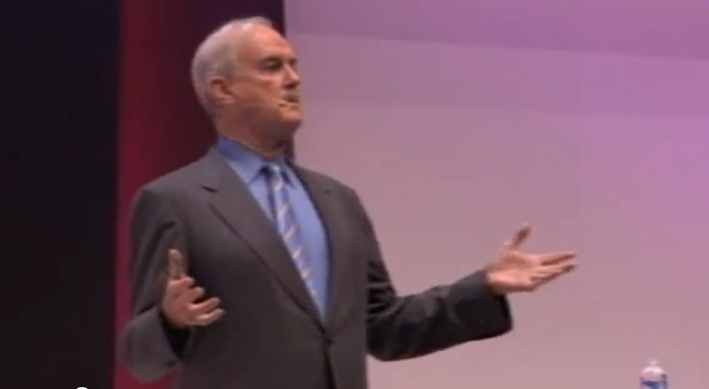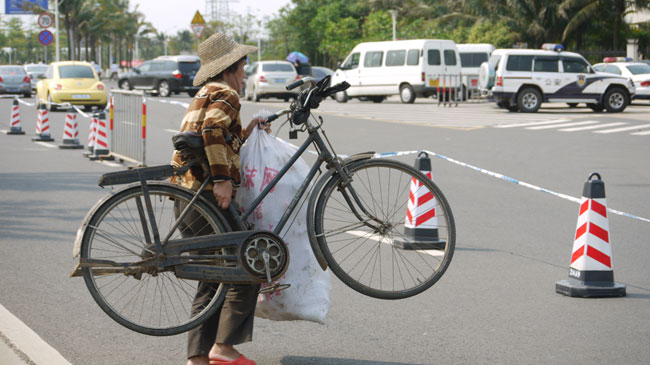Some thoughts about Neurobotics, a very young science
and its prospective relation to sport, Part 1
Inspired by Yoky Matsuoka*
Technologies play an essential role in sport. More and more sophisticated devices are available to record parameters from inside the body and from the outside. Since the controversies around the South African sprinter Oscar Pistorius before the Olympic games in 2008 the term techno doping became a familiar term. His protheses are not yet more than skillfully made mechanical legs with a high impact on energy and power release. He is for the time being probably the most famous example of how fuzzy the borders between the man and the machine have become. In the following I want to talk about another dimension of men being interwoven with a technical device.
I want to give some thought to the processes of neuromuscular recruitment which is the foundation of all movements and behaviors. This topic is a concern of mine, because since I am around in the sports and in triathlon in specific (that’s the case for 10 years now, since I got infatuated with biestmilch), I realized that the predominant narrative fueling sport, sport science and sports medicine is mainly caught between 2 poles rooted in the same mindset:
There are the facts and hypotheses around the muscles, carbs/fat metabolism, storage, lactate, oxygen consumption that represent a potpourri of biomechanics and biochemistry with a spicy touch of applied physiology and there is the more or less loosely associated still highly speculative field we call “mental”. Mental became a favorite term in sport, it’s not defined, it remains vague and is an area were the most different mindsets either coexist or collide, and where science did not produce enough facts yet to avoid theories of various kinds and validity.
In this paragraph I try to extract the neuromuscular recruitment from the “mental”, where it gets blended in most of the time. What neuromuscular recruitment is about becomes very obvious and relatively easy to understand, if we make a short excursion into artificial intelligence (AI), robotics and neurobotics.
These 3 fields of science have emerged from each other. The oldest is AI. To put it in a few short words, it deals with the eternal but ambivalent dream of mankind to construe a copy of man, a dream that has always been closely related with the great fear to create a monster. Most of you may know the story of Frankenstein. Since we have computers this dream has been realized in some way or the other, the tasks executed by our machines / robots have been still simple and not very sophisticated. It took us decades to comprehend that beings are complex networks of intertwined and multileveled sensorimotor units, that the brain and consciousness in specific do not work in a unidirectional way as centralized commanders, and thus are by far less important than thought.
Since chips became smaller and processors with multiple kernels faster the options for robotics changed tremendously. Parallel-processing and decentralized programming became possible. Together with the changed mindset in neuroscience and cognitive science (beware! not yet a mainstream way of thinking) robots started to become different beasts. The new science that has merged is neurobotics. It is only up to 10 years old! Neurorobotics is a thrilling field. I would like to introduce an example to you that makes the very abstract concrete.
One aim of neurobotics is to develop protheses, an other is preventive diagnostics to detect diseases long before they become apparent. Patterns of motions and behaviors that change slightly may indicate an upcoming illness. In sport neurobotics may be able to help to discover neuromuscular activation asymmetries, undertrained areas and recovery issues. But this is the future and nobody knows how far away it is. Therefore back to the present to prosthetics.
The protheses developed by neurobotics are electronic devices, and they are sensorimotor units that are as closely cross-linked with the body (and the mind!) as possible.
One degree of freedom: a prothesis steered by the brain or what are its requirements
Multiple joint movements, dexterity, controllability, strength and motion, protheses should be able to mimic biological features. If you try to tackle a demanding job like this, namely mimic biology, then you realize how little we know about those things we take for granted, and how wrong some of our assumptions and conclusions may well be.
Until today we are only able to replace limbs with a prothesis that moves intentionally by signals sent from the brain of the respective person, if the injury was a trauma on a local level only, so no spine and no brain injury was involved. The process of developing a prothesis combines computer science with neuroscientific knowledge, which in turn taps know-how from applied physiology and biomechanics. There are only round about 22 people world-wide, where scientists succeeded to replace limbs, mainly hands and arms, the leg is far more difficult to deal with, that are more than a mechanical apparatus.
To achieve the goal to retrieve signals from the brain to the computer, and then from the computer to the artificial limb, needs a re-innervation e.g. of the pectoralis major muscle, the big front muscle of the ribcage. This rewiring or rerouting procedure is extremely difficult and time-consuming. From there you have to take the signals to an electronic device from where electricity is finally converted into movements of the limb.
It is current all the way through from the brain to the computer. Our nervous system is operated by electrical signals, exactly like computers are, electrical circuits, negative and positive feedback loops are controlling and regulating both systems. But to catch hold of them in our body and get them on to a computer is high art. Until now, the movements such an artificial limb is able to execute are still limited, even if the nervous system as a whole is intact. Then you can imagine how sophisticated it is to harvest the respective signals from the brain, if there are either the brain, the spinal cord or both damaged.
For you as an athlete it may interesting to know that the training needed to get the optimal out of a prothesis of this kind takes years, and then still movement is restricted to moving the arm and to closing and opening the hand. To achieve this the respective person needed 4 years of training, and in certain situations he still prefers to use the hook instead of the hand. Motions like grabbing, twisting, turning, opposing the thumb remain still a dream.
To be continued…
**Yoky Matsuoka works in the multidisciplinary field of science and engineering to understand, assist, and enhance human movement and sensing ability. Yoky works on fundamental scientific questions while affecting and changing people in daily tasks.


